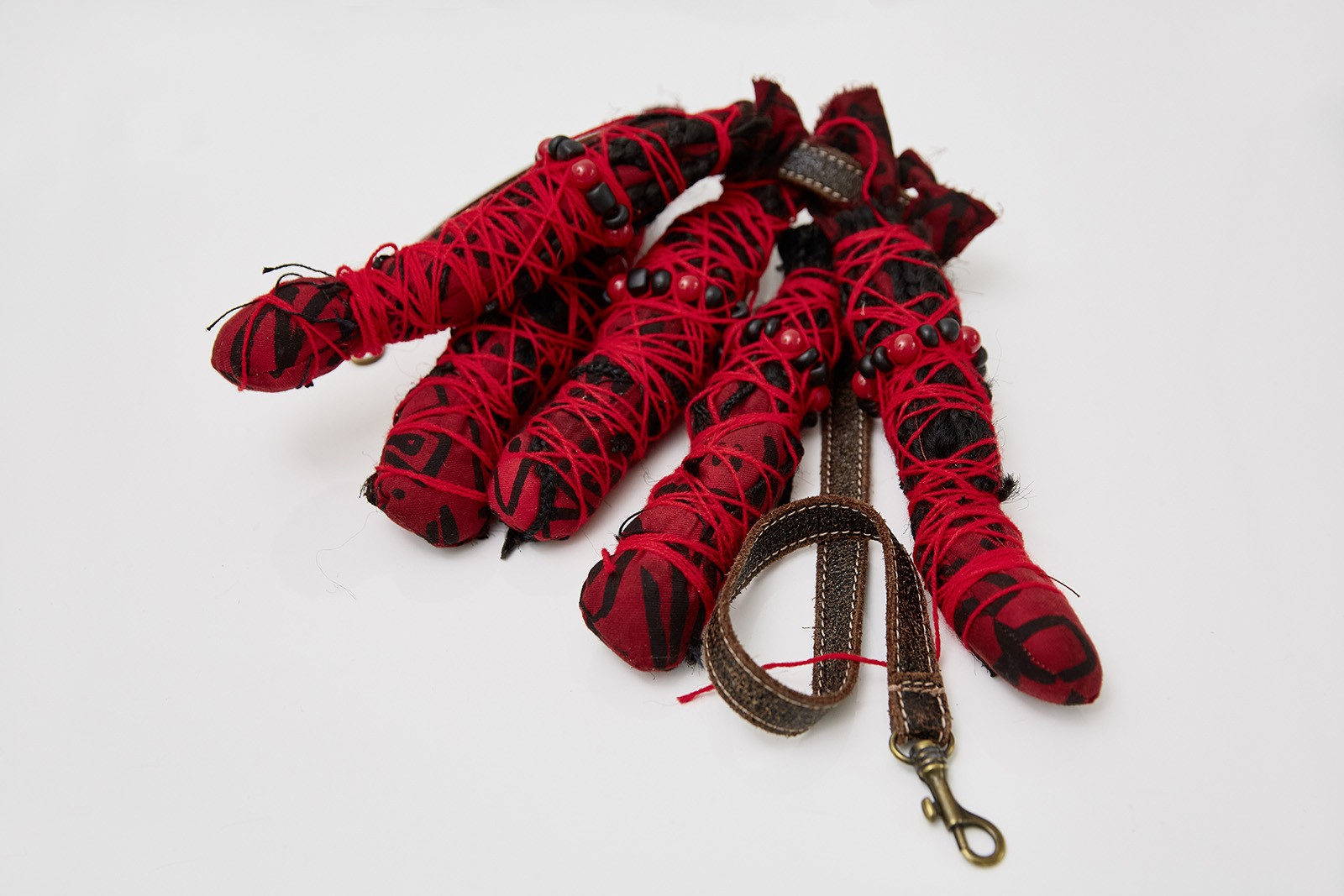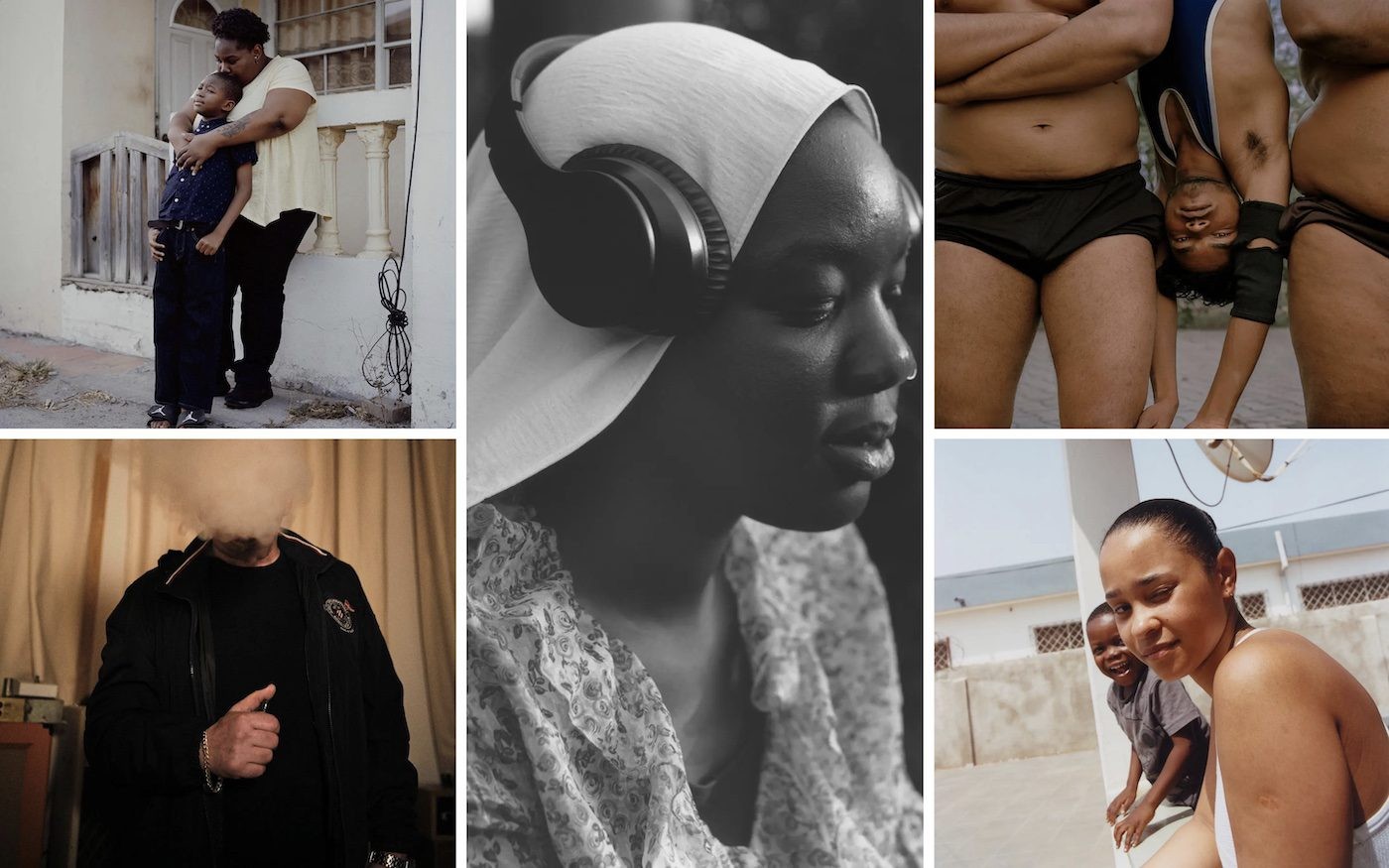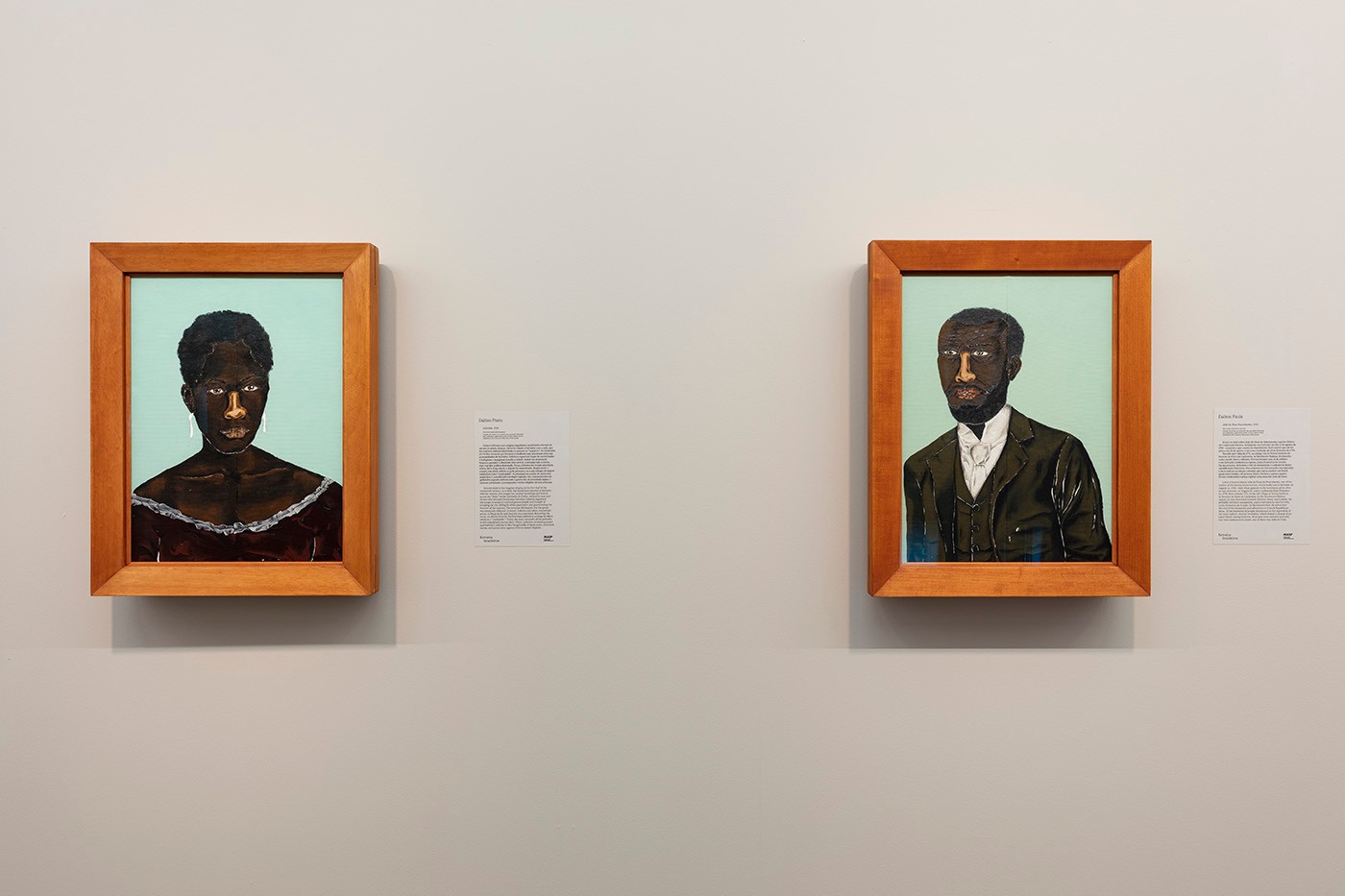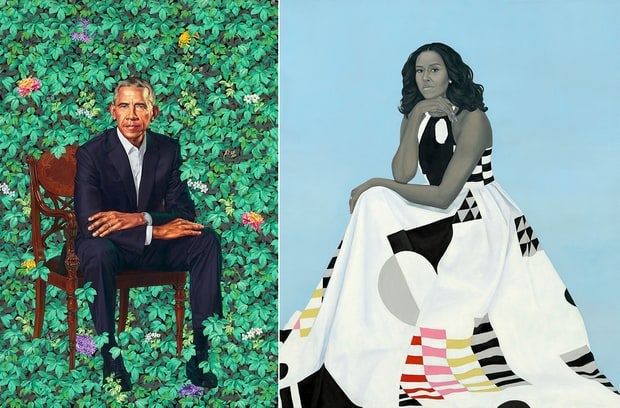The Lives of Samuel Fosso: A Conversation with Yves Chatap

01 June 2017
Magazine C& Magazine
Words Yves Chatap
14 min read
This article is part of a series produced in collaboration with Aperture magazine, coinciding with Aperture’s summer 2017 issue, “Platform Africa.”
It all began with the high heels. In 1976, as a precocious teenager, Samuel Fosso traveled from Bangui, Central African Republic, where he operated his own photography business called Studio Photo Gentil, to visit his family in Nigeria. There he discovered a pair of platform boots similar to those worn by the popular Nigerian highlife musician Prince Nico Mbarga on the cover of his record albums. Fosso’s grandmother agreed to buy him the boots, and upon returning to Bangui he completed the look, ordering a pair of bell-bottoms from a local tailor. “I put on my new outfit and went out. In the street, I ran into a priest who said, ‘You look handsome. You look like an astronaut. Do you want to reach heaven?’ And I answered, ‘Yes!’”
For more than forty years, Fosso, like Cindy Sherman, Iké Udé, and Yasumasa Morimura, has focused on one subject: himself. In the 1970s, after making pictures for clients, he would finish off rolls of film by staging imaginative self-portraits, wearing sunglasses, bathing suits, and fashions that would have challenged the conservative sensibilities of ’70s-era Bangui. By playing with the cultural codes of style and pose, Fosso evoked the power of personal transformation. His early experimental images remained private until 1994, when he was invited to participate in the first edition of the Bamako Biennale. Since then, often using a team of stylists, Fosso has pushed his self-portraiture into new realms of gender-bending theatricality.
Ahead of his solo exhibition at London’s National Portrait Gallery in June 2017, Fosso spoke with Paris-based curator Yves Chatap about studio photography, artistic influences, and taking on the roles of a lifetime.
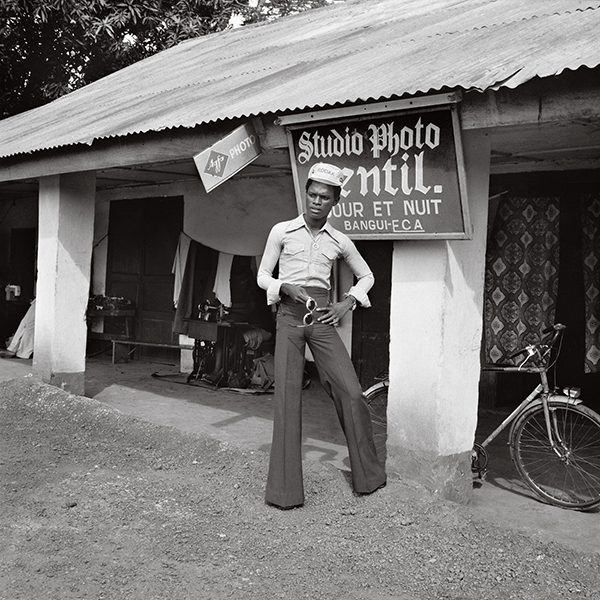
<figcaption> Samuel Fosso, Self-Portrait, 1976–77
© the artist and courtesy JM Patras/Paris.
Yves Chatap:Your earliest exhibition dates back to the first Bamako Biennale in 1994. Can you tell us about that experience?
Samuel Fosso: For the first edition of the Biennale, emissaries were sent all over Africa to find photographers. There was a French photographer, Bernard Descamps, who discovered my work while visiting Bangui and invited me to participate in this exhibition. When we met, I was already working in color, but Descamps wanted to see my black-and-white images from the 1970s, which he then submitted to the jury. That’s how I got my first show at the Palais de la Culture in Bamako, which was inaugurated by then president of Mali, Alpha Oumar Konare.
During my stay in Bamako, we did workshops. Six months later, I learned that I had won first prize, which I was awarded in September 1995 in Paris, where I went for the first time. It was then that I had my first exhibition in Paris, with Martin Parr and Marie-Paule Nègre.
YC:How did this first visit to Europe go?
SF: It gave me the chance to meet photographers like Henri Cartier-Bresson, who congratulated me and advised me about my work. I didn’t know him, but that encouraged me to carry on, as did the support of Malick Sidibé and Seydou Keïta, because I came to understand that my process was an asset that I shouldn’t overlook.
YC: When did you become aware of the work of other African photographers?
SF: Before coming to Bamako, I didn’t know any other African photographers like Malick Sidibé or Seydou Keïta, but they seemed to have known my work, because my photographs were hung before I arrived. I have to admit, I didn’t know I was making artistic photographs. It was a discovery for me. It was a big surprise to have Malick Sidibé and Seydou Keïta coming to give me advice on my work and to encourage me about my future as an artist-photographer, explaining that it was rare to see a photographer photograph himself. I thanked them for their advice and encouragement and was able to get to know their works during the exhibition.
All of that opened my eyes. Once I got back to Bangui, I continued working, because I said to myself, If I don’t produce anything, they will forget about me. Those meetings still frame my career today.
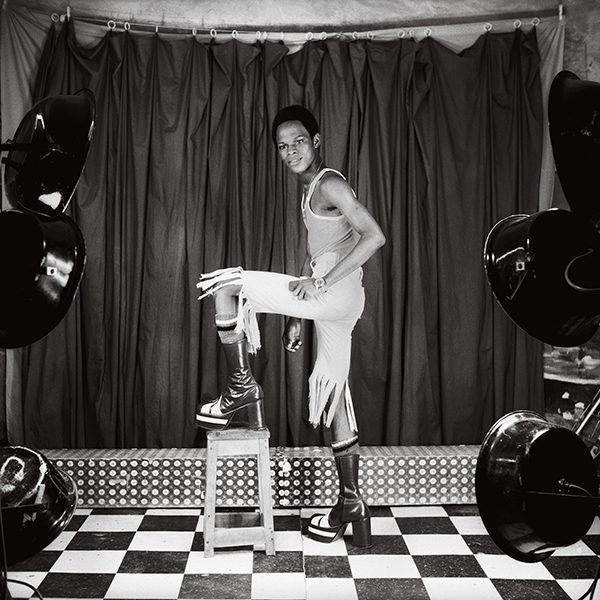
<figcaption> Samuel Fosso, Self-Portrait, 1976–77 © the artist and courtesy JM Patras/Paris.
YC: Let’s go back to the beginning. How did you get started in photography?
SF: I was born in Cameroon. As a child, I suffered from paralysis, and my mother was too ashamed to have my picture taken like other babies. I was cured under my grandfather’s care in eastern Nigeria, but then war broke out in Biafra in 1967. It was then that my uncle brought me first to Cameroon, then to the Central African Republic, where we worked making women’s shoes. On our street, there was a studio photographer who I began to spend time with. I asked him to teach me photography. I spent five months as an apprentice, after which I wanted to have my own studio. The problem was making prints without wasting too much paper because, as my uncle said, “You don’t do business for loss, you do business for gain.” But I found out that the owner didn’t want me to leave because he had stopped losing money when I started working in his studio. After learning that, my uncle told me to find a space for my own studio and he bought me an enlarger.
YC: You mentioned your childhood and your illness. Isn’t your self-staging today a form of therapy for that suffering body?
SF: It is indeed, because body movement is part of health, if you think about athletes, for example. For my body, it was the distress of illness and healing, but also the cure that my grandfather worked on me—perhaps I had to suffer from that. When you look at my work, it’s my body that is looking at me. It’s my way of seeing. Perhaps it’s my illness. I don’t know. But what matters is that it is my natural body.
YC:Do you see your grandfather as a hero?
SF: For me, yes, my grandfather is a hero because I am not the only person he had to heal. He was a healer his whole life and he took care of the mentally infirm. Whenever anyone brought an insane person to my grandfather, after two weeks the person would begin to respond and to recover their natural state and normal consciousness. Then, the family could come take them back. At that time, money was hard to come by, so people paid him in hundredths of a shilling. My family couldn’t really make ends meet. He healed many people. The whole village considered him a hero. He was an important figure who the village asked for advice on major decisions. For me, he’s a hero, and he is deserving of the term.
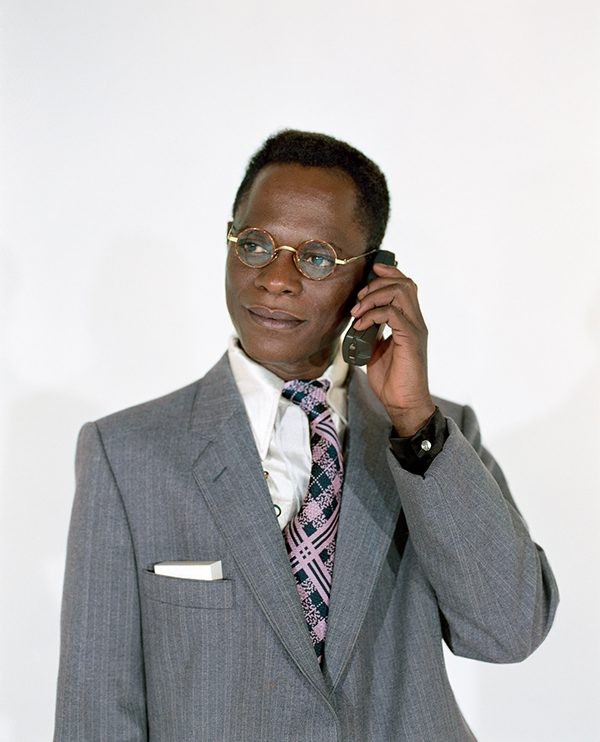
<figcaption> Samuel Fosso, The Businessman, 1997, from the series Tati
© the artist and courtesy JM Patras/Paris.
YC: Why put this personal history into images?
SF: Simply because Westerners have never believed in traditional medicine. I bear witness to the idea that the healer can treat many things. It’s a way of educating about the practices of traditional medicine that have long been rejected.
YC:What was the motivation behind your first self-portraits in the 1970s?
SF: I opened my own studio on September 14, 1975. I started taking pictures of myself to make up for the absence of photography in my childhood. I used the last frames on rolls of film because I didn’t want to waste them. When I closed the studio for the day, I would take pictures of myself and send the images to my grandmother in Nigeria. I had clothing custom-made based on things I saw in magazines, mostly Afro-American ones.
YC:Your inspirations in adventurous fashion can be seen in your first images in the 1970s. Did you have icons in mind when you made those photographs?
SF: If you take the example of Nico Mbarga—I was mostly inspired by him, especially by his outfits. I had clothing made, and I bought shoes called talons dames that you couldn’t find in central Africa. As for Fela Kuti, it was political because there were denunciations. We still weren’t free, and so we couldn’t just do whatever we wanted. From 1977 to 1980, and especially before democracy, conditions weren’t easy, particularly because of the political denunciations. That scared me because I didn’t want to get arrested.
YC:So, you were aware that your approach could have political consequences?
SF: I was aware that there were political consequences and, as a result, I couldn’t just do whatever I wanted.
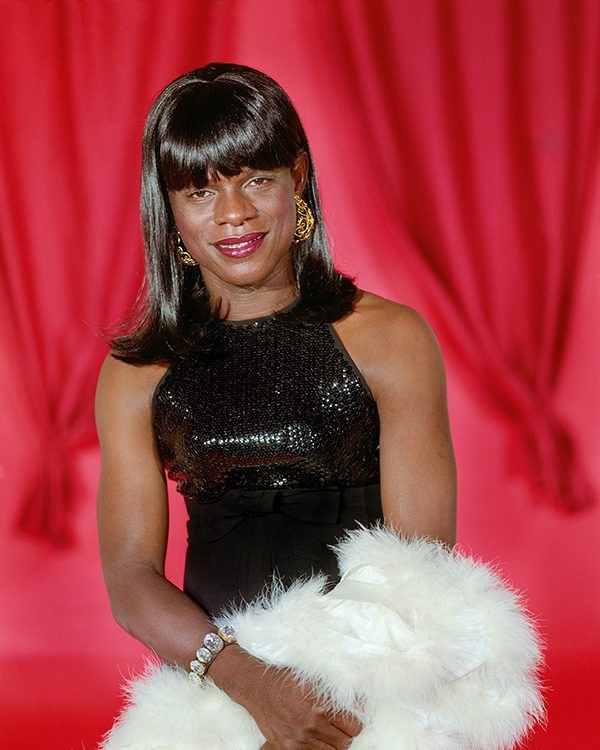
<figcaption> Samuel Fosso, La Bourgeoise, 1997, from the series Tati
© the artist and courtesy JM Patras/Paris.
YC:Three years after you participated in the Bamako Biennale, you were commissioned by the Paris department store Tati to make a series of images. Tati (1997) contains some of the most famous images of your career. It’s about archetypes and characters, from the rock star to the businessman to the bourgeois woman. In this series, what message did you want to deliver?
SF: It’s a discourse about segregation and slavery and a demand for independence and freedom. I gathered all these ideas together, as you can see in the image La femme libérée américaine dans les années 70 (The liberated American woman of the 1970s), which I made before my first visit to the United States, and in the series African Spirits (2008), which follows the same path. In African Spirits, there is a desire to inscribe within the museum space all those figures who have marked the history of blacks in Africa and in America. It should be known that they all fought for civil rights and liberties for blacks. This is a heritage that we must not forget. I had to pay homage to them because they have allowed us to be free, in a way, and to give them their place in history so that our children may remember what has happened in the past and what is still happening today.
YC:Your series Mémoire d’un ami (Memory of a friend, 2000), about a neighbor in Bangui who was burglarized and killed, and Le rêve de mon grand-père (My grandfather’s dream, 2003), about your grandfather, are highly personal explorations. When you work with your body, do you experience it as a subject body or an object body?
SF: When I work, it’s always a performance that I choose to undertake. It’s not a subject or an object; it’s one more human being. I link my body to this figure, because I want to translate its history. I consider my body as a human being, but always belonging to other subjects, to the person who I am in the process of reproducing.
YC:And, technically, how do you work in the studio?
SF: I work with a team consisting of costumers, makeup artists, and an assistant photographer to carry out my shoots. Before, as I said, I did photography without realizing that I was an artist. I created my self-portraits on my own with an eight-to-ten-second delay timer. Now my work is easier, since I use a remote-controlled camera, which lets me see if my pose matches the image that I want. It’s an advantage over the past, because the technique is the same but the shot is different in relation to the work.
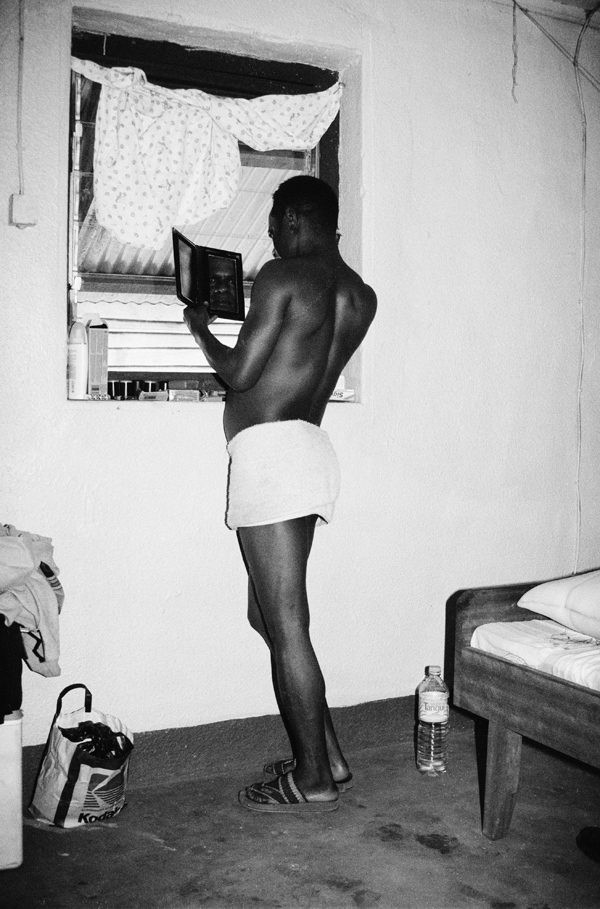
<figcaption> Samuel Fosso, Mémoire d’un ami (Memory of a friend), 2000 © the artist and courtesy JM Patras/Paris.
YC:You returned to Bamako in 2007 for a retrospective of your work. What were your impressions of that experience since the first Biennale? In particular, what was your relationship with the young photographers who saw you as le grand maître (the great master)?
SF: By 2007, things had developed very quickly, and this retrospective was important because I had changed since 1994. I had produced other works in keeping with the earlier series, so returning to Bamako in 2007 for a solo exhibition was a point of pride. I met many Malian photographers who wanted to meet me and talk about photography. They called me “the great master.” And the BBC had produced a documentary film about me in 2002. We discussed photography and the way that I made my images. This solo exhibition that began in Bamako toured all over the world for the next two years thanks to the French Ministry of Culture. My impressions of the young photographers were overall positive because they understood the importance of African photography. That left a strong impression on me because I knew that African photography would not die.
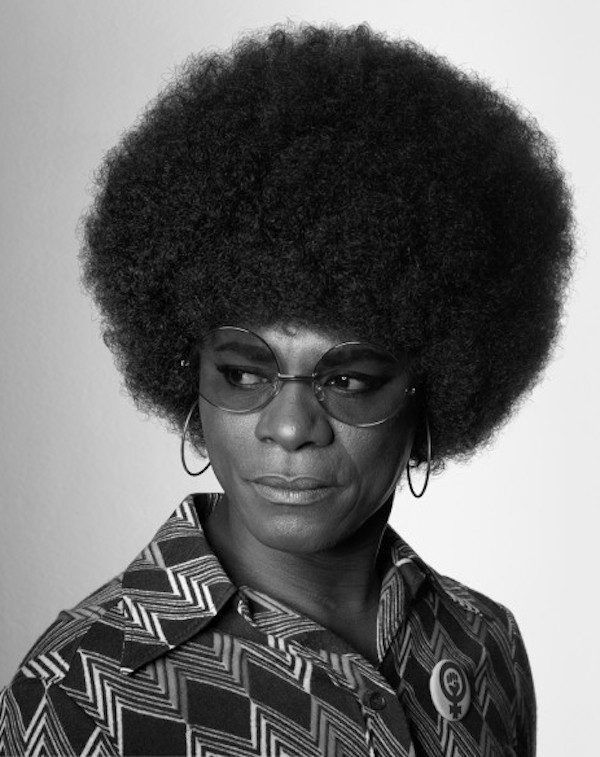
<figcaption> Samuel Fosso, African Spirits, 2008 © the artist and courtesy JM Patras/Paris.
YC:In 2013, you made the series Emperor of Africa, in which you performed as Mao. The images were based on famous paintings of the Chinese leader. Why did you make this series?
SF: After enslavement by the West, there was colonization, then political independence, which is absolutely not economic independence and still besets us today. We find ourselves with China profiting from our lack of means without providing sufficient financing in return.
In Africa, no one realized what China would become on the continent. Every African country has been seized by China. I see what they’ve made of their own country with the production of coal and pollution. They came here with a fifty-fifty proposal to rebuild Africa, on the pretext that Europe no longer has the means to do so. Now, you see that they are destroying and looting the continent’s natural resources for their own interest, Africa having been unable to develop its own means of local production. But if China went away, what would Africa become without its money? That’s where the title emperor comes from, in view of the history of that country that has only ever lived under an imperial system.
YC: When you talk about relations between Africa and Asia, is there not a kind of fatality about the future of Africa, and also of the individual?
SF: This series translates the observation of a form of repetition of history around questions of autonomy and the exploitation of resources. We cannot accept the implantation of the Chinese empire in Africa out of fear of reproducing the past. Among African states, relations are complicated and agreements difficult, so if we ourselves can’t manage to find common ground, nothing will change.

<figcaption> Samuel Fosso, SIXSIXSIX (detail), 2015
© the artist and courtesy JM Patras/Paris
YC:In your latest series, SIXSIXSIX (2015), the body is no longer in costume. The artist is without makeup. Why did you choose to orient yourself in this direction?
SF: This series collects 666 images in total, each of which is unique. It’s a work where photographic material has nothing to do with analog prints. The challenge was to make 666 different self-portraits with a different bodily expression in each.
In this series, there is unhappiness and happiness, misfortune and good fortune. I was very inspired by these two aspects. SIXSIXSIX refers to the number of misfortune. By that I mean in terms of what I’ve encountered in my life up to now. After my illness came the Biafra war; millions of people died, and I was fortunate to be saved. I went to the Central African Republic where I experienced the same thing during the conflicts of 2014, in which I could have died. So, 666 is a number of misfortune and at the same time is a number of good fortune. For all that I’ve been through, God has been with me and has saved me.
YC:In SIXSIXSIX, do we see Samuel Fosso or someone else?
SF: It’s neither the body that smiles, nor the body that cries, but a representation of life and all the misfortunes that strike us deep within. In the end, it’s about buried emotions that we ourselves create, and about exorcising my own resentment in the face of this situation. From 1976 to 2014, I have never been at peace in my life when faced with the actions of those who always sow misfortune among children and innocents.
Yves Chatap is an independent curator based in Paris.
Translated from the French by Matthew Brauer.
This article is part of a series produced in collaboration with Aperture magazine, coinciding with Aperture’s summer 2017 issue, “Platform Africa.”
Read more from



